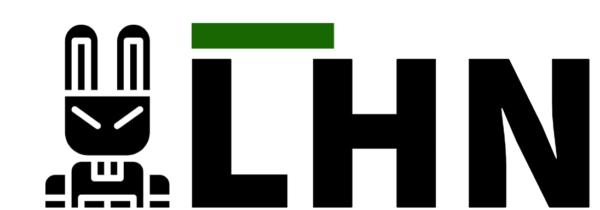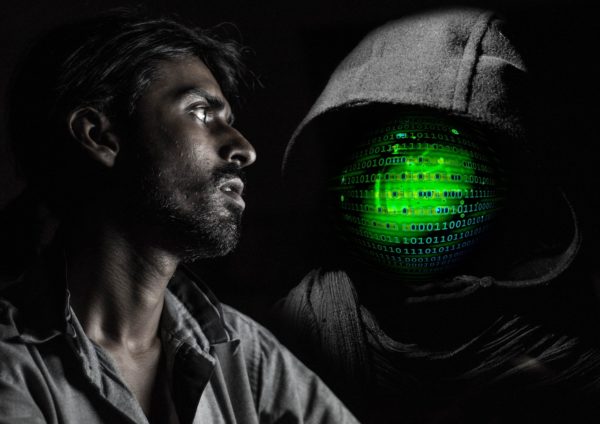In the intricate labyrinth of the digital age, an ominous world thrives hidden beneath the surface — the dark web. To threat actors, it offers a shroud of anonymity, while for cybersecurity specialists, it’s a trove of intelligence waiting to be unearthed. Dark web monitoring is a crucial practice for unmasking the obscure ecosystem of cybercriminals.
By combing through the communities where cybercriminals buy, sell, and trade stolen login credentials, bots, hacking tools, and more, cyber practitioners can gain valuable insights on how to best protect their organizations.
Understanding the Dark Web: The Unseen Side of the Internet
When we think of the internet, what typically comes to mind are websites and online platforms that we use daily – from social networks to online marketplaces. This visible internet, referred to as the clear web, however, merely represents the tip of a colossal iceberg. Beneath this familiar territory lies a more complex and elusive landscape, often referred to as the deep web and dark web.
The deep web constitutes all the online content that is not indexed by standard search engines and includes content that support services on the clear web. It includes: email accounts, online banking interfaces, private databases, to paywalled content. The deep web generally is mostly necessary for day-to-day operations, though there are illicit sources like Telegram channels.
The dark web is also not indexed by standard search engines, and is intentionally hidden. It requires special tools for anonymous browsing and communication.
While the dark web is often associated with illegal activities, such as the sale of drugs, weapons, and stolen data, there are also other activities, including privacy-focused communication, political activism, and the sharing of sensitive information in oppressive regimes. The anonymity provided by the dark web makes it appealing for both legal and illegal purposes, as it allows users to communicate and share information without revealing their identities or locations.
In this murky underworld, cybercriminals thrive, capitalizing on the secrecy it offers to conduct their illegal deeds. From orchestrating sophisticated hacking operations to selling and buying sensitive stolen data, these cybercriminals continue to pose significant threats to individuals and businesses alike. Hence, understanding the dark web is crucial in protecting your organization.
The Role of Dark Web Monitoring in Cyber Threat Intelligence
In the dynamic landscape of cyber threats, the dark web poses a particular challenge due to its anonymity and the complexity of its operations. It’s here that dark web monitoring steps into the limelight, emerging as a critical component in the arsenal of cyber threat intelligence.
What is dark web monitoring?
Dark web monitoring refers to the process of scanning, identifying, and tracking illicit activities on the dark web that could pose a risk to individuals or organizations. From compromised credentials, sensitive corporate data, to discussions around potential threats – this practice is akin to a reconnaissance mission in the depths of the cyber underworld.
With the rise in data breaches and cyber attacks, information often ends up for sale on the dark web. Early detection of such incidents can be the difference between thousands and millions of dollars. Identifying stolen data or breached credentials on the dark web allows for quick response, potentially preventing further damage.
Proactive Defense with Dark Web Monitoring
Moreover, dark web monitoring goes beyond reactive measures. It can also provide a proactive defense mechanism. By gaining insights into trending cybercriminal tactics, techniques, and procedures (TTPs) discussed in the underground forums, businesses can anticipate potential threats and harden their security posture accordingly.
For instance, a rising discussion around a specific kind of malware on dark web forums could alert security teams to prioritize their defense against this particular threat. Thus, dark web Monitoring can also provide a predictive edge, enabling companies to stay one step ahead of cybercriminals.
However, navigating the dark web is no simple task. The sheer volume of data, coupled with the complexity of the encrypted networks, demands sophisticated technology and specific expertise.
How SaaS Platforms Enable Effective Dark Web Monitoring
The secretive nature and technical complexity of this cyber underworld require a level of sophistication and expertise that often surpasses the time and resources available to cyber practitioners. This is where Software-as-a-Service (SaaS) platforms, specialized in cyber threat intelligence, become invaluable assets.
SaaS platforms provide an accessible and scalable solution to the challenges of dark web monitoring. They employ advanced technologies and methodologies to trawl through the vast, encrypted network, automating the complex process of data collection, filtration, and analysis.
How Dark Web Monitoring Works with SaaS Platforms
Here’s how SaaS platforms contribute to a more effective dark web monitoring:
- Comprehensive Data Collection: These platforms utilize advanced crawling technologies, which are capable of deep-diving into the dark web’s most concealed corners to gather relevant data. They systematically scan numerous sources, including underground forums and markets to collect a wide array of information.
- Advanced Analysis and Intelligence: Harnessing artificial intelligence and machine learning algorithms, these platforms can sift through massive amounts of collected data to identify patterns and correlations that would be nearly impossible for human analysts to discern manually. These technologies enable the detection of emerging threats, stolen data, and breached credentials rapidly and accurately.
- Real-Time Alerts and Notifications: Cyber threat intelligence platforms provide real-time alerts when your organization’s data appears on the dark web. This capability is crucial in enabling a swift response to potential threats or breaches.
- Actionable Insights: Beyond data collection and threat detection, these platforms deliver actionable insights and recommendations. They facilitate informed decision-making, allowing organizations to fortify their cyber defense strategies proactively.
- Compliance and Reporting: With in-built compliance and reporting tools, SaaS platforms aid organizations in meeting regulatory requirements related to cyber security and data privacy.
As cybercriminals continue to refine their tactics and expand their operations within the dark web, leveraging a specialized SaaS platform for dark web monitoring becomes an integral part of a comprehensive cyber threat intelligence strategy.
Emerging Cybercriminal Trends: Insights from Dark Web Monitoring
The dark web is constantly evolving, as are the tactics and strategies employed by cybercriminals who operate within this realm. A robust dark web monitoring strategy not only helps in identifying and mitigating immediate threats but also provides a unique vantage point to observe the emerging trends in the cybercriminal world.
5 Common Dark Web Trends to Monitor for:
- Ransomware-as-a-Service (RaaS): A disturbing trend uncovered through dark web monitoring is the rise of Ransomware-as-a-Service. This model works much like legitimate SaaS platforms, except its customers are cybercriminals of various levels. Threat actors have also escalated ransomware attacks to double and even triple extortion. This commoditization of cybercrime has resulted in a significant uptick in ransomware attacks worldwide.
- Increased Commoditization of Stolen Data: Cybercriminals continue to flood the dark web’s marketplaces with a wide array of stolen data, from credit card information to sensitive corporate data. With the increasing frequency of data breaches, the sale of such information has become more organized and commoditized.
- Sophisticated Phishing Kits: Another concerning trend is the availability of increasingly sophisticated phishing kits on the dark web. These kits allow malicious actors of all skill levels to conduct elaborate phishing campaigns, contributing to the rise in such attacks.
- Cryptocurrency Exploits: As cryptocurrency continues to surge in popularity, it’s no surprise that related crimes have followed suit. Underground markets offer advanced hacking tools aimed at exploiting cryptocurrency wallets and transactions.
- Encrypted Malware: Encryption is no longer just a tool used for preserving privacy; cybercriminals are leveraging it to hide malicious software. Encrypted malware poses a significant challenge as it can evade traditional security defenses.
As these trends demonstrate, the threats posed by the dark web are not static; they continuously evolve and grow more sophisticated. However, through effective dark web monitoring, organizations can stay ahead of these threats, adapting their cyber threat intelligence strategies to address new challenges as they emerge. In the fast-paced, high-stakes game of cybersecurity, knowledge truly is power. By revealing the underground ecosystem of cybercriminals, dark web monitoring plays a pivotal role in empowering businesses to protect themselves in an increasingly digital world.
Dark Web Monitoring with Flare
The treacherous terrain of the dark web can become an opportunity with thorough understanding and strategic dark web monitoring. Flare archives the dark web back to 2017 and enables cyber practitioners to safely and anonymously browse for any potential external threats. Proactive defense through dark web monitoring is a crucial aspect of helping your organization stay ahead of potential threats. Sign up for a free trial to see how Flare can aid your dark web monitoring.


1 comment
Thank you so much for updating me on dark web. It has helped me to be informed of another cyber threat and how to go about it.
Comments are closed.